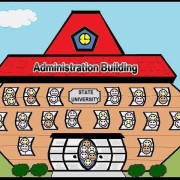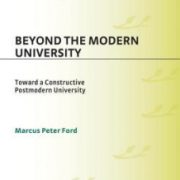Nothing good comes from the endless chase for money.
Mrs. Day is presumably the source of the oft-used cliché, “Beware what you wish for,” attributed to her in 1874 through words published in a timeworn book Rough Hewn. Her advice has been shared extensively over the years. Does it also apply to today’s college football? Who knows for sure? But we know one thing: we’ve never seen anything like it.
We’ve seen lateral power conference transfers before, and plenty of them, too (e.g., Arkansas from Southwest to Southeastern in 1992, Maryland from Atlantic Coast to Big 10 in 2014), but we’ve never seen a mass exodus from one conference as we’ve seen over the last few weeks. Six schools in—and then out—of the PAC-12. In a flash, the Power 5 conferences became the Power 4. First, Colorado to the Big 12, and then five more transfers in a single day—Oregon and Washington to the Big 10, and Arizona, Arizona State, and Utah to the Big 12. And it may not be over.
What can we make of it? The schools jumped conferences for one reason: to get a bigger slice of the media money pie. The PAC-12 prospects lacked big-time in that regard (streaming-only deal with Apple TV), and because of that, the PAC-12 (as I write this) is the PAC-4 (California, Stanford, Oregon State, and Washington State).
Amid the predictable responses–cheers from fans who love it and boos from those who don’t—it’s important to understand that various forces were in play long before things unfolded over the past few weeks.
It’s easy (too easy) to look at near-term causes like Big 12 Commissioner Brett Yormack outmaneuvering the PAC-12’s George Kliavkoff in the media rights war. He did, of course, by beginning media rights negotiations before the PAC-12. But let’s also remember that West Coast teams are always at a media disadvantage because of time differences with the East Coast, meaning fewer national eyes are on late-starting PAC-12 games. Kliavkoff can’t change the time difference.
A more enveloping cause is related to college football’s governing body, the NCAA, which doesn’t govern much regarding regulating what the conferences can and can’t do. For example, the NCAA is doing nothing to reign in the financial arms race that is so pervasive in major college sports today (e.g., there aren’t any caps as there are in the pros). When Name, Image, and Likeness (NIL) legislation was passed in states across the country, rather than take the bull by the horns internally, the NCAA leadership went to Congress asking for a national policy solution.
In truth, though, you can’t put all the blame on the NCAA leadership. That’s because it’s a membership organization, and the members (the powerful ones) don’t want that kind of leadership from the NCAA. They want to do their own thing, unencumbered by an overarching entity telling them what they can and can’t do.
But that doesn’t mean the NCAA hasn’t tried to lead. Over a decade ago, the organization levied sanctions on Penn State for lack of institutional controls due to Sandusky’s crimes. They were serious sanctions, including a $60 million fine, a four-year football postseason ban, and vacating all wins from 1998. Well, two years later, the sanctions were rolled back.
Years earlier, the NCAA regulated the major college football media market by limiting the number of times per season that schools could appear on national TV. I remember the rule vividly because it applied to the 1966 game when Notre Dame played Michigan State in the so-called “The Game of the Century.” Played in East Lansing, the regular season game was for the national championship because there was no post-season championship system back then. Even as uber-important as that game was, I had to listen to it on the radio in my college dorm room because both teams had exceeded the TV limit, and the NCAA wouldn’t allow the game to be broadcast live on national television. (It was a classic, too, ending in a 10-10 tie.)
But NCAA media regulation didn’t last. It ended after a 1984 Supreme Court ruling brought by the University of Oklahoma Regents against the NCAA. SCOTUS sided with OU 7-2, even though one of the dissenting votes came from a former collegiate football star, Justice Byron “Whizzer” White (University of Colorado). The Court contended that NCAA regulation violated both the Sherman Antitrust Act and the Clayton Antitrust Act.
That ruling opened the media floodgates and enabled what we have today—the opportunity to watch college football games on Saturday on multiple networks from noon Eastern time to midnight and then some. Games are also broadcast every night save Sunday and Monday (as a nod to the NFL) and on Friday (as a nod to the high schools), though Friday will come off that list soon.
While fans enjoy the opportunity to watch their favorite teams play, that’s not the issue. The issue is the amount media companies pay conferences for the right to broadcast all those games.
It wouldn’t be an issue if there weren’t a financial arms race in play, but there is. It’s a straightforward equation: Schools spend more and more money, and they need more and more money coming in. Media and related funds are a big chunk of what schools spend.
Several external to the NCAA follow the money trail, and the graph below is drawn from one of those sources, the Knight-Newhouse College Athletics Database. I presented these data recently on The Wolfman Calls (Dale Wolfley’s) program on West Virginia Football, the Voice of College Football network. Another excellent source is USA Today’s repository on college athletics finances. As you can see below, a big chunk of total revenues at West Virginia University (Big 12) (43%) comes from media and related sources.
Rather than view the data as a budget analysis matter only, I encourage you to view it as a major issue facing college athletics. Universities increasingly rely on media money to fund their athletic programs, and because they need more and more money, that source becomes increasingly important. How important?
The search for more media money led to the undoing of the so-called “Conference of Champions,” a label attributed to the PAC-12 that is not branding hyperbole. Almost every year since 2000, save for two, the PAC-12 (Stanford) has won the Learfield Directors’ Cup for overall outcomes of men’s and women’s sports. In those two years, Stanford came in second, and UCLA placed #2 six times.
Now, UCLA is Big 10-bound, while Stanford, ranked by Forbes as America’s #2 university (behind only MIT), faces an uncertain athletic future. Cal-Berkley does too, which Forbes ranked in a #2 tie with Stanford. Two of the best schools in the country are left out in the cold.
The distressing aspect of that portrait is that intercollegiate athletics are not supposed to be about money. Intercollegiate athletics in America were launched in the 19th Century because they were seen as compatible with and supportive of the overall higher education mission—developing the whole student. But today’s major intercollegiate athletics (revenue-based athletics specifically) are more compatible with professional athletics–in magnitude, presentation, and public interest.
Money–big money–follows from those characteristics. But is the media money flow sustainable? That’s where Mrs. Day’s admonition has legs. Two related issues loom.
The first involves linking an enterprise tightly to a single-source provider. Consider this cautionary tale. The phrase “As the auto industry goes, so Michigan goes” cuts both ways. I’ve witnessed what it means when good-paying auto assembly line jobs were plentiful and then when the supply dwindled. That shift affected the State of Michigan in a big way. For proof, consider the variety of sector rankings offered recently by U.S. News & World Report. Michigan’s overall ranking (#41) is more like Mississippi (#48) than Minnesota (#5).
The related issue is that the ups and downs of the auto industry aren’t different from variability in the sports media industry (or any industry, for that matter). Riding high at one point may be replaced with struggling for air at another.
The day I wrote this piece, The New York Times featured a long analysis of ESPN’s situation, including its future prospects entitled, “How ESPN Went from Disney’s Financial Engine to Its Problem.” It’s a sobering analysis that includes a deep dive into the implications associated with the shift in consumers’ tastes regarding how Americans prefer to secure their televised news, sports, and entertainment material writ large.
The big issue for ESPN is that millions of people are cutting the cable cord, and cable subscriptions are a lucrative option for ESPN. Each residential cable customer can generate up to $9 monthly for ESPN and up to $12 when a customer gets the network as part of the Disney sports bundle. But the problem with the cable subscription option is that customers pay for channels they rarely watch.
I remember the stink raised when many cable customers complained about paying a monthly fee for the Big 10 channel, a channel lots of customers rarely, if ever, watch. The kerfuffle led to a months-long battle between cable providers and FOX about whether fans should pay separately for the Big 10 Network as an ala carte option. Eventually (and just before the football season kicked off), the negotiated decision was to include the channel’s cost as part of customers’ monthly cable bill.
But the overarching problem is that customers prefer to only pay for channels they watch regularly, and the ala carte option can be pricey. The authors of the NYT article assert that the monthly bill for ESPN as an ala carte option could be between $40 and 50 per month–and that’s just to keep revenues at the current level. Disney wants revenue to see growth. That goal will likely get more challenging because so much of ESPN’s coverage involves rights-related live programming, and the costs of obtaining those rights will likely keep rising.
That takes us right back to college football. Conference commissioners are expected to deliver the goods by negotiating bigger media rights contracts, and that expectation is trickling down to the AD level. Consider Notre Dame as an example. Notre Dame’s new AD, Pete Bevacqua, doesn’t come to the Irish as a former coach or as an AD at another school. Bevacqua is the outgoing chairperson of NBC Sports.
As Colorado coach Deon Sanders said recently, “Everybody’s chasing a bag (money).” That’s why “watch what you wish for” is something to remember.
While the musical chairs routine has destabilized some schools, like Oregon State, it brings stability to many other schools. But how long will that last? Perhaps the bigger question is this: Ten years from now, how many schools will be able to afford power-level college football?
Unless and until money (and chasing it) ceases to be the primary objective, it’s likely that the answers to those questions are not that long, and there will be fewer schools playing at college football’s highest level.
There’s something else, and it reminds me of the lyrics from Stephen Stills’s popular song, Love the One You’re With (1970): “If you can’t be with the one you love, honey, Love the one you’re with.” So, just like the guy who goes to a party with his long-time squeeze, meets somebody more attractive and desirable, and leaves with her, we have universities making the same move. That move says loads about them but also says a lot about the new partner.
Graham Couch, a Michigan State beat writer at the Lansing State Journal, put it this way about the Big Ten.
“The Big Ten has become unlikable. Untrustworthy. A bully. It pillaged the Pac-12 a year ago, and then, this past week, as the Pac-12 collapsed — as a century of tradition went up in smoke, as thousands of student-athletes in dozens of sports saw the experience they signed up for in peril — the Big Ten stepped in and offered refuge … to the Pac-12’s strongest members. So unlikable. Perhaps that’s how you win in today’s college athletics landscape. But what transpired late last week didn’t feel like winning.”
_____________
This article first appeared in The Sports Column, “From Power 5 to Power 4: “Beware What You Wish For”







